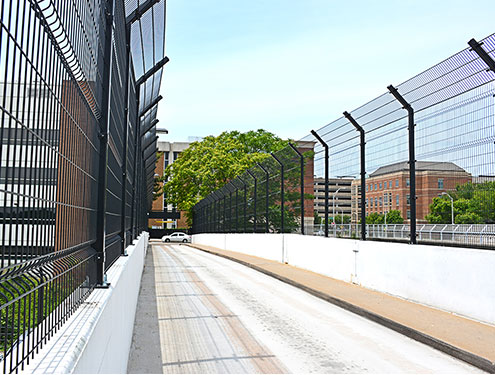Among all the buildings in Historic Richmond, VCU's Egyptian Building is certainly one of the most fascinating. This Replica of an Egyptian temple is tucked away between Broad St. and the VCU/MCV Colleges of Virginia.


The building was erected in 1845 as the home for Hampden-Sydney College’s Medical school, the first in the south. It is currently part of the campus of the Medical College of Virginia (a branch of Virginia Commonwealth University) and is the emblem of the campus.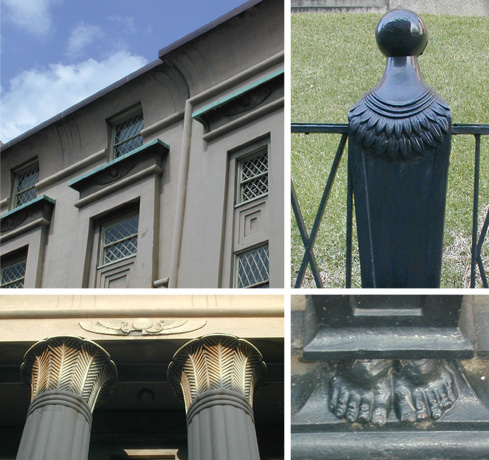
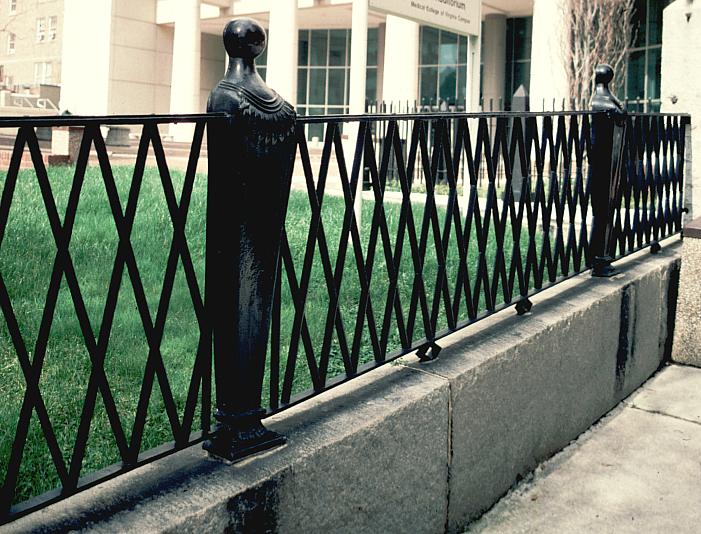 The building was designed by Philadelphia architect Thomas S. Stewart in the Egyptian revival style. Egyptian imagery is common in the field of medicine as the first physician in western history is often cited as Imhotep. Imhotep was also the first recorded architect of the western world. Egyptian forms had been adapted for funerary and medical buildings previously but MCV’s Egyptian Building took this influence uncommonly far. On the interior, the lotus flower design is used repeatedly. The colors are deeply symbolic and have a mystic meaning: red represents divine love, blue represents divine intelligence and the golden yellow represents the mercy of God. Hieroglyphics are incorporated in the lobby decorations, and the floor tiles depict a large scarab beetle. The building is filled with glyphs, antiquated symbols, and even quotes from hymns praising the gods Aten and Amun. However, the facade of the building is not merely an Egyptian entry sutured onto a neoclassic building. Rather a complete egyptian expression. Its obelisk gate, papyrus columns, monumental windowless surfaces, and harsh contrast between shadows and highlights give it it's distinct Egyptian effect. Rarely do people guess from a photograph that the building is five stories high due to its deceivingly sculptural facade. Some significant architectural elements of VCU/MCV's Egyptian Building include:
The building was designed by Philadelphia architect Thomas S. Stewart in the Egyptian revival style. Egyptian imagery is common in the field of medicine as the first physician in western history is often cited as Imhotep. Imhotep was also the first recorded architect of the western world. Egyptian forms had been adapted for funerary and medical buildings previously but MCV’s Egyptian Building took this influence uncommonly far. On the interior, the lotus flower design is used repeatedly. The colors are deeply symbolic and have a mystic meaning: red represents divine love, blue represents divine intelligence and the golden yellow represents the mercy of God. Hieroglyphics are incorporated in the lobby decorations, and the floor tiles depict a large scarab beetle. The building is filled with glyphs, antiquated symbols, and even quotes from hymns praising the gods Aten and Amun. However, the facade of the building is not merely an Egyptian entry sutured onto a neoclassic building. Rather a complete egyptian expression. Its obelisk gate, papyrus columns, monumental windowless surfaces, and harsh contrast between shadows and highlights give it it's distinct Egyptian effect. Rarely do people guess from a photograph that the building is five stories high due to its deceivingly sculptural facade. Some significant architectural elements of VCU/MCV's Egyptian Building include: 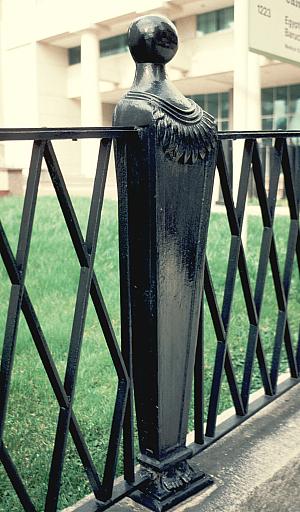
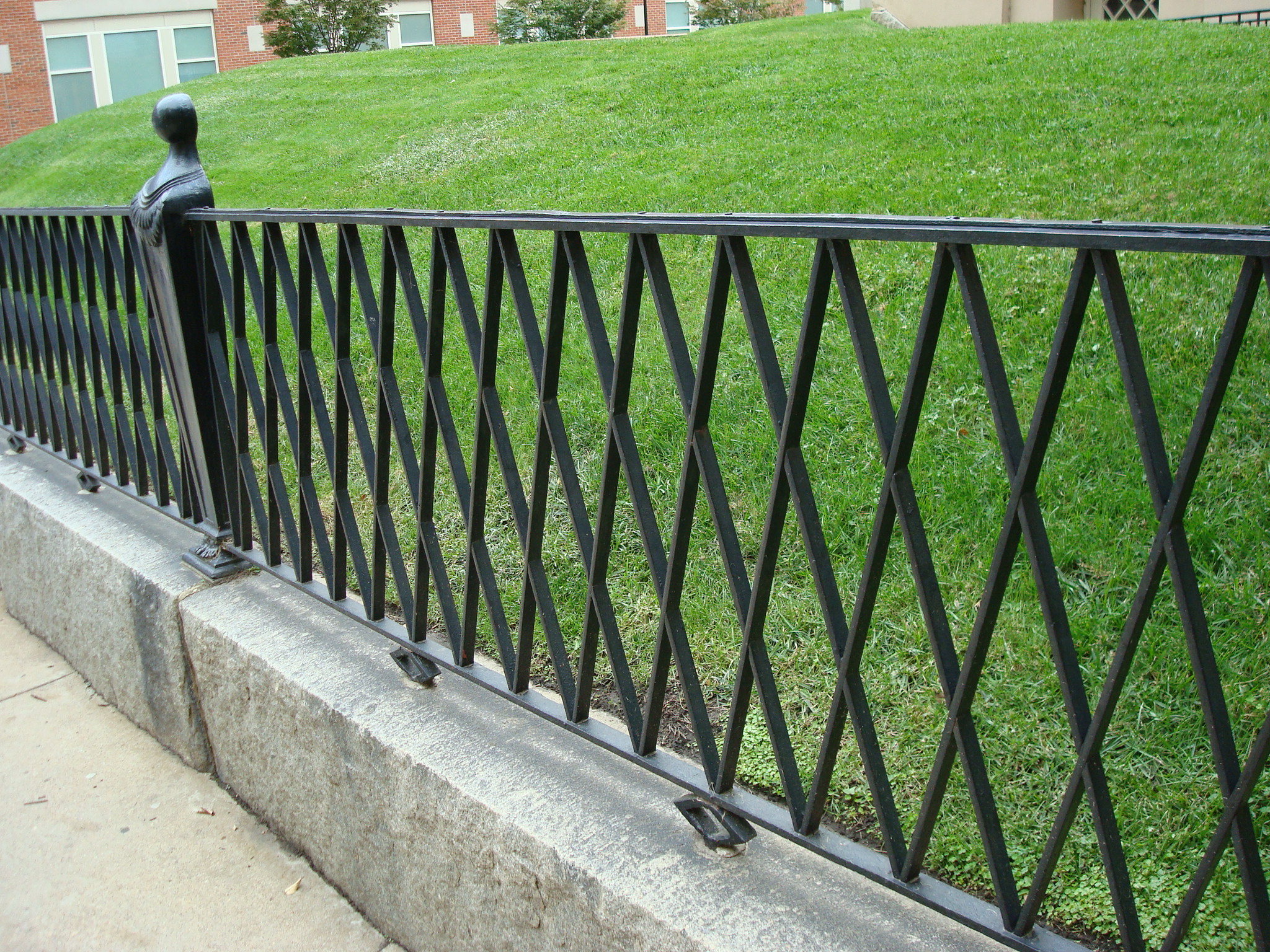 Richmond's Egyptian Building has remained in continuous use since its completion and all of the Egyptian Building's unique architectural qualities have landed it on the list of National Historic Landmarks. The Egyptian Building was added to the National Register of Historic Places in 1969. It is considered to be the finest example of Egyptian Revival Architecture in the United States-Virginia. The building was restored in 1939 by Richmond based the architects, Baskervill. At the time of restoration the interior of the building as well as the exterior landscape was rejuvenated carrying on the classic Egyptian Revival style. To visit VCU's Egyptian Building head over to: VCU MAPS and discover a rare part of Richmond's architectural history nestled in your own backyard. You can also browse more timeless Cast Iron Ornamental Fence Installations at The Church Hill People's News.
Richmond's Egyptian Building has remained in continuous use since its completion and all of the Egyptian Building's unique architectural qualities have landed it on the list of National Historic Landmarks. The Egyptian Building was added to the National Register of Historic Places in 1969. It is considered to be the finest example of Egyptian Revival Architecture in the United States-Virginia. The building was restored in 1939 by Richmond based the architects, Baskervill. At the time of restoration the interior of the building as well as the exterior landscape was rejuvenated carrying on the classic Egyptian Revival style. To visit VCU's Egyptian Building head over to: VCU MAPS and discover a rare part of Richmond's architectural history nestled in your own backyard. You can also browse more timeless Cast Iron Ornamental Fence Installations at The Church Hill People's News.

 The building was designed by Philadelphia architect Thomas S. Stewart in the Egyptian revival style. Egyptian imagery is common in the field of medicine as the first physician in western history is often cited as Imhotep. Imhotep was also the first recorded architect of the western world. Egyptian forms had been adapted for funerary and medical buildings previously but MCV’s Egyptian Building took this influence uncommonly far. On the interior, the lotus flower design is used repeatedly. The colors are deeply symbolic and have a mystic meaning: red represents divine love, blue represents divine intelligence and the golden yellow represents the mercy of God. Hieroglyphics are incorporated in the lobby decorations, and the floor tiles depict a large scarab beetle. The building is filled with glyphs, antiquated symbols, and even quotes from hymns praising the gods Aten and Amun. However, the facade of the building is not merely an Egyptian entry sutured onto a neoclassic building. Rather a complete egyptian expression. Its obelisk gate, papyrus columns, monumental windowless surfaces, and harsh contrast between shadows and highlights give it it's distinct Egyptian effect. Rarely do people guess from a photograph that the building is five stories high due to its deceivingly sculptural facade. Some significant architectural elements of VCU/MCV's Egyptian Building include:
The building was designed by Philadelphia architect Thomas S. Stewart in the Egyptian revival style. Egyptian imagery is common in the field of medicine as the first physician in western history is often cited as Imhotep. Imhotep was also the first recorded architect of the western world. Egyptian forms had been adapted for funerary and medical buildings previously but MCV’s Egyptian Building took this influence uncommonly far. On the interior, the lotus flower design is used repeatedly. The colors are deeply symbolic and have a mystic meaning: red represents divine love, blue represents divine intelligence and the golden yellow represents the mercy of God. Hieroglyphics are incorporated in the lobby decorations, and the floor tiles depict a large scarab beetle. The building is filled with glyphs, antiquated symbols, and even quotes from hymns praising the gods Aten and Amun. However, the facade of the building is not merely an Egyptian entry sutured onto a neoclassic building. Rather a complete egyptian expression. Its obelisk gate, papyrus columns, monumental windowless surfaces, and harsh contrast between shadows and highlights give it it's distinct Egyptian effect. Rarely do people guess from a photograph that the building is five stories high due to its deceivingly sculptural facade. Some significant architectural elements of VCU/MCV's Egyptian Building include: - battered walls become thinner from the bottom up give an impression of solidarity and height
- diamond paned windows incorporated without a style break
- columns of reeds bunched together with palm leaf capitals
- cast iron fences with mummy cases forged by R.W. Barnes of Richmond, Virginia.

 Richmond's Egyptian Building has remained in continuous use since its completion and all of the Egyptian Building's unique architectural qualities have landed it on the list of National Historic Landmarks. The Egyptian Building was added to the National Register of Historic Places in 1969. It is considered to be the finest example of Egyptian Revival Architecture in the United States-Virginia. The building was restored in 1939 by Richmond based the architects, Baskervill. At the time of restoration the interior of the building as well as the exterior landscape was rejuvenated carrying on the classic Egyptian Revival style. To visit VCU's Egyptian Building head over to: VCU MAPS and discover a rare part of Richmond's architectural history nestled in your own backyard. You can also browse more timeless Cast Iron Ornamental Fence Installations at The Church Hill People's News.
Richmond's Egyptian Building has remained in continuous use since its completion and all of the Egyptian Building's unique architectural qualities have landed it on the list of National Historic Landmarks. The Egyptian Building was added to the National Register of Historic Places in 1969. It is considered to be the finest example of Egyptian Revival Architecture in the United States-Virginia. The building was restored in 1939 by Richmond based the architects, Baskervill. At the time of restoration the interior of the building as well as the exterior landscape was rejuvenated carrying on the classic Egyptian Revival style. To visit VCU's Egyptian Building head over to: VCU MAPS and discover a rare part of Richmond's architectural history nestled in your own backyard. You can also browse more timeless Cast Iron Ornamental Fence Installations at The Church Hill People's News. 
